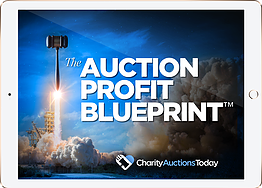DOWNLOAD The Auction Profit Blueprint
The 4 tools BIG organizations use every time to skyrocket auction profits!
The Step-By-Step Guide to stop leaving thousands on the table.
Learn how to create compelling corporate sponsorship packages. CharityAuctionsToday can help you craft proposals that will support your events.

Corporate sponsorship packages are a vital tool for organizations. They help secure funding for events, programs, and initiatives.
But creating an effective package is not always straightforward. It requires a deep understanding of both your organization’s needs and the interests of potential sponsors.
This guide will provide a step-by-step process to create compelling corporate sponsorship packages. It will cover everything from understanding the basics to marketing your packages effectively.
You’ll learn how to tailor your packages to align with potential sponsors’ interests. We’ll also delve into the art of crafting an appealing sponsorship packet.
The guide will also explore how to tailor packages for different events. Whether it’s for nonprofit organizations, corporate events, or educational programs, you’ll find relevant tips.
We’ll also touch on the legal and ethical considerations to keep in mind. Transparency and compliance are key to building trust with your sponsors.
By the end of this guide, you’ll be equipped to create corporate sponsorship packages that appeal to sponsors and meet your organization’s needs. Let’s dive in.
Corporate sponsorship packages serve as a strategic partnership tool. These packages help organizations fund their events and initiatives. They also provide sponsors with opportunities for visibility and engagement.
The core idea is to create a mutually beneficial relationship. Sponsors gain access to new audiences and marketing avenues. Organizations receive financial support and valuable resources.
Effective nonprofit sponsorship packages require careful planning. They should align with both the mission of the organization and the goals of the sponsor. Understanding these fundamentals is crucial to attracting the right partners.
Sponsorship programs have clear, defined goals. They aim to secure necessary funding for projects and events. Such goals should reflect the mission and values of your organization.
Crafting these goals helps in creating targeted sponsorship packages. When both parties understand the mission, the chances of successful collaboration increase.
Research is a vital step in identifying the right sponsors. You must understand their business objectives and marketing strategies.
Look at companies already sponsoring similar events or causes. This insight can guide you in crafting packages that attract their interest. Tailoring your approach based on research makes your offer more compelling.
Aligning sponsor interests with your offerings is key. This requires a nuanced understanding of what sponsors value most. They often look for exposure, brand alignment, and consumer engagement.
You should offer packages that highlight these benefits. For instance, include opportunities for brand visibility during the event. Also, demonstrate how partnership with your organization could improve their social responsibility profile.
Tailoring your sponsorship package to these interests will make it stand out. It increases the likelihood of securing commitment from potential sponsors. Consider this alignment as both a marketing strategy and a negotiation point. This approach ensures both parties gain maximum value from the partnership.
Creating a compelling sponsorship packet is crucial. It serves as your first impression and sales pitch to potential sponsors. It’s essential to craft each element with care to effectively communicate your value.
Start by clearly stating the purpose and impact of your event or program. This context sets the stage for discussing sponsorship opportunities. It should align with your potential sponsor’s interests and goals.
Moreover, make sure your packet is concise and visually appealing. Use clear language that avoids jargon. This will ensure that your message is both accessible and persuasive.
Need help? Use our sponsorship package template to get started.
Visual design can make a significant difference in your sponsorship packet. A professional design inspires confidence and interest. It can guide the sponsor’s eye to the most important parts of your message.
Consider using high-quality images and a cohesive color scheme. These design elements should reflect the tone and branding of your organization. This helps create a polished and cohesive presentation.
Also, don’t underestimate the power of well-chosen fonts and spacing. A clean and readable layout enhances comprehension. You want your packet to be engaging and easy to navigate to keep sponsors’ attention.
Defining clear sponsorship levels offers structure. Sponsors prefer knowing what they are committing to. It allows them to weigh different levels of investment against the benefits they will receive.
Create a tiered structure—such as Gold, Silver, and Bronze levels. Each level should offer increasing value and exclusivity. These options help accommodate various budgets and involvement desires.
Here’s a simple example:
Each sponsorship level should include a detailed breakdown of benefits. This clarity makes it easier for sponsors to make informed decisions. Transparency regarding costs and opportunities builds trust with potential partners.
Data and demographics empower your sponsorship proposal. They demonstrate the value and reach of your event. Sponsors look for this information to assess potential returns on their investment.
Start with statistics about your audience size and engagement. Use past event data if available. This information confirms your claims about reach and impact.
Additionally, provide insights into audience demographics. Details such as age, location, and interests are vital. They help sponsors determine if your audience aligns with their target markets.
Use visual aids like charts or graphs to make data digestible. This presentation style enhances clarity and persuasion. A data-driven proposal stands out and adds credibility to your sponsorship packet.
Highlighting past successes can reassure potential sponsors. Real-world examples and testimonials serve as powerful endorsements. They provide proof of the impact and success your organization can achieve.
Include brief case studies of past sponsorships if applicable. Describe the goals, execution, and results achieved. These examples can provide context and set expectations.
Testimonials from previous sponsors can be invaluable. They allow a glimpse into the sponsor experience and satisfaction. Choose testimonials that speak to specific benefits provided by your partnership.
Lastly, ensure that these endorsements are genuine and varied. They should showcase different aspects of your offerings. This approach helps assure potential sponsors that their investments will be worthwhile.

by Joakim Jardenberg, Unsplash
Adapting sponsorship proposals to fit specific events is crucial. Each event type may attract different sponsors with unique goals. Understanding these nuances allows you to create targeted event sponsorship packages.
Consider the event’s purpose and target audience. Align these elements with potential sponsors’ values and interests. This alignment increases the chances of a successful partnership.
Remember to emphasize the distinct benefits of each event type. Highlight unique selling points that would appeal to varying sponsor objectives. Tailored sponsorship packages demonstrate thorough preparation and foresight.
Nonprofit events often focus on social causes and community impact. Sponsors interested in corporate social responsibility are ideal partners here. Highlighting the cause’s alignment with the sponsor’s values can be compelling.
Create packages that emphasize the positive outcomes of sponsorship. Offer benefits such as brand visibility within a socially conscious audience. Showcase the impact donations will have on the cause and community.
Furthermore, consider adding recognition opportunities. Sponsors appreciate being acknowledged for their contributions. Features like gala night mentions or award presentations can enhance appeal.
Corporate events have distinct dynamics. Networking and industry visibility often drive sponsorship interest. Sponsors at these events look for opportunities to connect with potential clients and partners.
Focus on offering premium networking opportunities in your packages. This could include exclusive access to VIP areas or meet-and-greets. Stress how these interactions could lead to valuable business relationships.
In addition, provide strong branding opportunities. Placement on banners, booths, and digital platforms can be attractive. These options help sponsors increase their reach within the industry.
Sponsorships for educational and community events focus on enrichment. Sponsors often seek to support local initiatives and development. Here, engagement and long-term impact are key selling points.
Offer packages that include community interaction opportunities. Workshops, mentoring sessions, or panels are highly valuable. These options allow sponsors to actively engage with the event’s goals.
Moreover, emphasize any direct benefits for participants. Educational content, community contributions, and skill development are crucial. Sponsors will value supporting initiatives that foster growth and learning.
Legal and ethical considerations are essential in crafting sponsorship packages. Ignoring these aspects can lead to complications and damage reputations. It’s important to address potential legal requirements before finalizing agreements.
Maintaining the highest ethical standards ensures trust. Sponsors and stakeholders will appreciate transparency and integrity. This commitment reflects positively on your organization and fosters long-term partnerships.
Transparency is fundamental in all sponsorship dealings. Clearly communicate how funds will be utilized and what sponsors can expect. This openness helps in managing expectations and avoiding misunderstandings.
Compliance with legal regulations is non-negotiable. Familiarize yourself with relevant laws that might affect your sponsorship agreements. Ensuring full compliance protects both parties and strengthens the partnership.
Every sponsorship arrangement may involve certain risks. Identifying and preparing for potential challenges is crucial. Have contingency plans in place to address unforeseen circumstances.
Risks might include financial discrepancies or logistical issues. Discuss these possibilities openly with sponsors. Developing strategies to mitigate risks demonstrates professionalism and foresight. This preparedness reassures sponsors of your capability to manage the partnership effectively.
To successfully secure sponsors, effective marketing of your sponsorship packages is vital. You must present your offerings compellingly to attract interest. Tailor your marketing strategies to fit the nature and scope of your event.
Start by identifying the best platforms to reach potential sponsors. This includes both digital avenues and traditional methods. Choose channels where your target sponsors are most active and engaged.
Remember that clear communication of value is key. Highlight how your event or initiative aligns with sponsors’ interests. Show them the potential impact and benefits they can gain from partnering with you.
Digital and social media platforms offer immense potential for reaching sponsors. Utilize these tools to amplify your message and expand your reach. With the right strategies, you can engage with a broader audience.
Focus on creating engaging content that resonates with potential sponsors. This might include showcasing past successful events or sharing testimonials. Make use of visual content, such as images and videos, for better engagement.
Engage actively with sponsors online. Respond to their comments, share relevant updates, and maintain an interactive presence. This not only builds interest but also fosters relationships and sets the stage for meaningful sponsorship discussions.
Personalized outreach is crucial in making your sponsorship appeal stand out. Craft proposals that speak directly to the sponsor’s brand and values. This demonstrates your understanding of their needs and increases the likelihood of a positive response.
It’s important to follow up with potential sponsors after initial contact. A well-timed follow-up can reinforce your interest and keep the conversation alive. Tailor your communication to reflect developments and new opportunities.
Build relationships through consistent engagement. Keep sponsors informed about your event’s progress and how their support will make a difference. This ongoing communication helps in nurturing partnerships and building trust.
Negotiation is a critical phase in finalizing sponsorship deals. Prepare to address sponsors’ concerns and preferences during discussions. Flexibility in finding mutually beneficial terms can lead to successful partnerships.
Be clear about what you can offer and what you expect in return. Transparency sets a positive tone and establishes trust. Use concrete data and examples to support your negotiation points.
Finalize agreements with an eye on the details. Ensure that all terms are clear and documented in a formal contract. This not only solidifies the partnership but also safeguards both parties against future misunderstandings or disputes.
Once your event concludes, it’s crucial to show gratitude towards your sponsors. They invested not only money but trust in your event’s potential. Offering genuine appreciation solidifies your relationship and opens doors for future collaborations.
Measuring the event’s success is equally important. This provides sponsors with tangible insights into the impact of their support. Use metrics that are relevant to the event’s goals and your sponsors’ objectives.
Consider how these outcomes can inform future sponsorship packages. Continuous improvement ensures your offerings stay attractive and competitive. Leveraging data and feedback, you can enhance your event’s appeal and effectiveness.
Expressing thanks should go beyond a simple note. Craft a personalized message for each sponsor, highlighting specific contributions. Including details about how their support made a difference can enhance the appreciation.
Share the event’s success with sponsors by providing a comprehensive report. This should include attendance numbers, media coverage, and any other relevant metrics. Offering quantitative and qualitative insights demonstrates professionalism and transparency.
Sharing outcomes helps sponsors see the value in their investment. It may encourage continued support and engagement. By maintaining open communication, you build trust and encourage sponsors to advocate for your organization.
Conducting a post-event debrief with sponsors offers valuable insights for all parties. This session can highlight what worked well and areas needing improvement. Encourage open dialogue to understand each sponsor’s perspective fully.
Use feedback from these discussions to enhance future sponsorship packages. Understanding sponsors’ experiences can inform adjustments to better meet their needs. This adaptability is key to developing long-lasting partnerships.
Identify potential opportunities for sponsors to remain involved. Whether through upcoming events or other initiatives, keep sponsors engaged. Highlighting future prospects not only extends their involvement but also strengthens the relationship.
Creating effective corporate sponsorship packages for nonprofit organizations can significantly enhance your fundraising efforts. A well-crafted package aligns sponsor goals with your organization’s objectives, ensuring mutual benefits. By understanding your sponsors’ needs and delivering clear value, you set the foundation for successful partnerships.
It’s also crucial to continually refine your approach based on feedback and outcomes. Staying adaptable and open to innovation keeps your sponsorship offerings competitive. This ongoing process not only strengthens current relationships but also attracts new potential sponsors. Ultimately, effective sponsorships can provide the support needed to achieve your organization’s mission and impact.
DOWNLOAD The Auction Profit Blueprint
The 4 tools BIG organizations use every time to skyrocket auction profits!
The Step-By-Step Guide to stop leaving thousands on the table.

